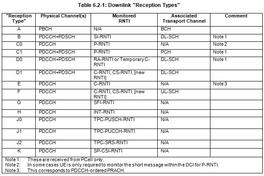5G RRC Connection Setup Procedure: UE and RAN
Advertisement
This page describes the 5G RRC (Radio Resource Control) Connection Setup Procedure between the UE (User Equipment) and the 5G RAN (5G Radio Access Network).
The 5G RRC connection setup procedure involves the exchange of messages between the UE and the 5G RAN. Figure 1 illustrates the 5G User Plane and Control Plane protocol stacks.
As shown, the 5G user plane consists of the PHY, MAC, RLC, and PDCP layers. The PHY layer is the physical layer (Layer 1), while the others are Layer 2 according to the OSI model.

As depicted, the 5G control plane consists of the PHY, MAC, RLC, PDCP, RRC, and NAS (between the UE and the NG Core) layers.
RRC stands for Radio Resource Control. It’s a protocol used for signaling between the 5G radio network and the UE. The RRC protocol has two states and transitions: RRC_IDLE and RRC_CONNECTED.
Here are the basic functions performed by the RRC sublayer:
- Broadcasting system information to NAS and AS.
- Establishing, maintaining, and releasing RRC connections.
- Security, including key management.
- Establishing, configuring, maintaining, and releasing point-to-point radio bearers.
- Mobility functions, measurement reporting, etc.
5G RRC Connection Setup Procedure

- Figure 2 shows the 5G RRC connection setup procedure.
- The UE receives the Synchronization Signal (SS) broadcasted by the 5G-RAN. The UE uses this SS to perform synchronization.
- The UE decodes the MIB (Master Information Block) and measures the BRS (Beam Reference Signal) to determine the downlink beam pair. The UE also decodes SIB (System Information Block).
- The UE transmits a RACH (Random Access Channel) preamble towards the RAN. The 5G-RAN responds with a RACH response to the UE.
- The UE transmits an RRC connection request to the 5G-RAN.
- The 5G-RAN replies with an RRC connection setup complete message to the UE.
- After the RRC connection is established between the UE and the 5G-RAN, reconfiguration may occur between them as needed.
Reference: TS V5G.300: “Network and Signaling Working Group; Verizon 5th Generation Radio Access; Overall Description”
Advertisement
 RF
RF


